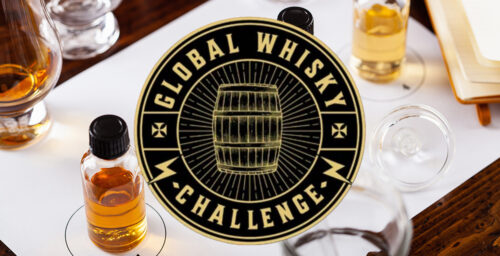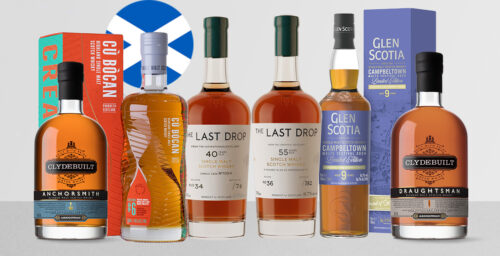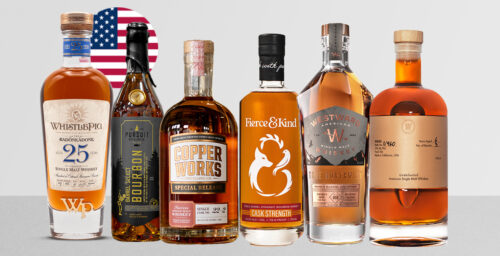Single malt whisky is made in many countries around the world, particularly in various regions of the United Kingdom and Europe. When one thinks of the previously mentioned areas, however, Scotland is what likely comes to mind. Another country there with their hand in the single malt space though is France, and it is from here that Brenne Whisky founder Allison Parc brings her aged spirit to American consumers for enjoyment.
Parc, who launched her French whisky back in 2012, does not specifically distill the product herself. Rather, working with a small unnamed distillery that produces Cognac, she found here a distiller also dabbling in whisky. The two partnered up, and today what one has is a popular niche product aged in French oak (including ex-cognac barrels) that is driven in large part by the passion of its founder and the love of those who discover it through her.
To learn more about Parc and her Brenne French whisky, we recently conducted an interview with her. Note this interview is edited for clarity and brevity.
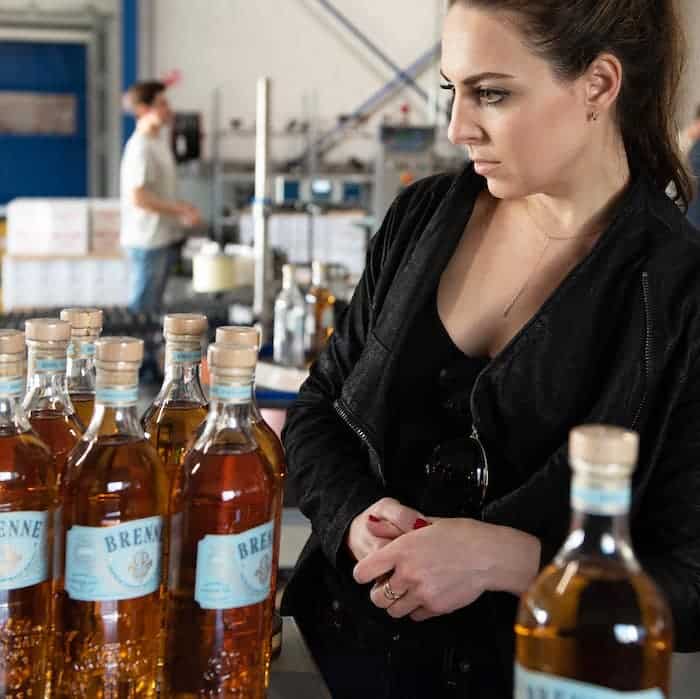
The Whiskey Wash (TWW): Let’s start off by talking a little bit about your background, personally and professionally before you got into whiskey. What were you up to in the years leading up to that?
Allison Parc: Well, I don’t think I’ve found a craft distiller who has a traditional background. Mine definitely falls into that lane, very nontraditional. I was a professional ballerina and did that from nine years old, when I signed my first contract, and I was in and out of contracts until I was 23. So I walked away from it at 23 years old, fell in love with whiskey, found a niche, realized no one was producing a whiskey the way I thought possible and decided to really start this journey.
I was very blessed that I also needed to make an income while I was figuring this whole thing out. So I did a few years in the luxury spa market. And then I also did about four years in the high-end jewelry world during the ’08 recession. So like luxury retail, direct to consumer, that kind of thing, while I was building up, making the whisky and building those relationship and getting stock laid down and everything like that.
TWW: You started the brand in what year?
Parc: I launched with product in 2012.
TWW: When we think about major categories of whisk(e)y around the world, French made whisky is a very obscure one, even though France has such a high consumption of whisk(e)y. Talk a little bit about why you chose that region?
Parc: In the U.S., which is where you and I are currently based, our adoption to Japanese whisky really started in 2012. But if you look at the first countries outside of Japan that were getting excited about Japanese whisky, that was actually France, and they started writing about it and buying it up in the early 2000s. I’ve just always been a Francophile, and I was paying attention to that.
So what was happening in the U.S. at that time when France was talking about Japanese whisky, we in the States and in London, we were writing about exploring, blowing up mixology and craft cocktails. It was two interesting trends that really started simultaneously. And the English speaking places weren’t necessarily translating these French publications on Japanese whisky. In France, all over Paris, all of a sudden you could really get some unbelievable whiskies from Japan. And I was like, “That’s super cool.” My first whisky I ever drank in my life was a Dewar’s, and I think I had it with either like ginger ale or Coke or something like that.
And literally my second whisky of my life was a Yamazaki 18, and it completely changed my perception of what whiskey could be. Dewar’s, which was a blended scotch, as I know now, and this very high-end Japanese whisky. But I didn’t know if they were different because of terroir, right? Was there something that the Japanese were doing that was different from what the Scotch were doing in that? Were they using local and indigenous ingredients to show a sense of place in the taste? So originally I thought, “That’s really cool. I should bring some of these Japanese whiskies over into the U.S.”
So I went to Japan. I read everything about Japanese whisky and Japanese business culture and everything like that. Had some really incredible experiences over there. Had some incredible meetings. Realized it wasn’t necessarily my avenue. I just really wanted to have a whiskey that was using a 100% local ingredients. So not trying to make scotch in another country. I wanted to have a whiskey made, a single malt, particularly, made outside of Scotland that was using 100% local ingredients from wherever that was being made.
So not Bourbon barrels, not using peat from Scotland, not using one of the four main strains of yeast for fermentation, not using one of the main grain varietals of barley for the whiskey. And when I realized no one was really doing it this way, I thought I should do it.
I chose France for a variety of reasons, but mostly because I think they were really the first on the Japanese whisky trend. Terroir is a French word and originally a French concept. And I just really believed that with their history of Calvados, Armagnac and Cognac, that they really were set up to make a beautiful, beautiful whisky. And I think I was correct.
TWW: You traveled over to France to pull this all together. What are you looking for in a partner over there? Have you ever named your partner?
Parc: I haven’t, only since he has asked me not to. Not by any choice of my own, but just out of sheer respect for him and his family. But originally, I wasn’t even looking to own the whiskey. I literally met with some distilleries and gave them the idea and said, “Hey, can you produce this?”
All I want to do was just run an import company back in New York. And they all shot me down. They were all like, “It’s a very cute idea, little girl. Go back to New York, child.” Because I was like 24 years old at the time, even though I still didn’t think I was a child. And yeah. So all these guys shot me down. Then I was just back in my apartment in New York going, “Is this even possible anymore? What does this look like?”
I then connected with a magazine guy from France – just through all of our passion about Japanese whisky – and he put me in touch with a distiller. I went over to Cognac and met my now distiller and he was making a single malt whisky using all local ingredients, all made organically. He had no organization to his barrels, but he was not using any bourbon barrels. He was only using French oak.
And so I asked him, “If he would like to make this whisky for me and I would start this import company.” He said he instead wanted to be partners.” It was really hard to hear. And I finally pivoted, and usually at 24 years old, when I faced a no, I would tell people all the reasons why they should say yes.
Instead I learned my lesson a little bit. And I said, “Okay, what do you want to do?” And he told me, “He just wants to be the farmer and the distiller.” And he’s like, “I want nothing to do with running the company, owning the brand, marketing, barrel maturation, blending. I just want to literally farm and distill, and then I don’t want anything else to do with it.”
I had this very rare moment in my life where I got to see that, if I went ahead and took these next steps, I might not just change my life, but I might be able to really change the possibility of what everyone in the world knows of single malt, which was cool.
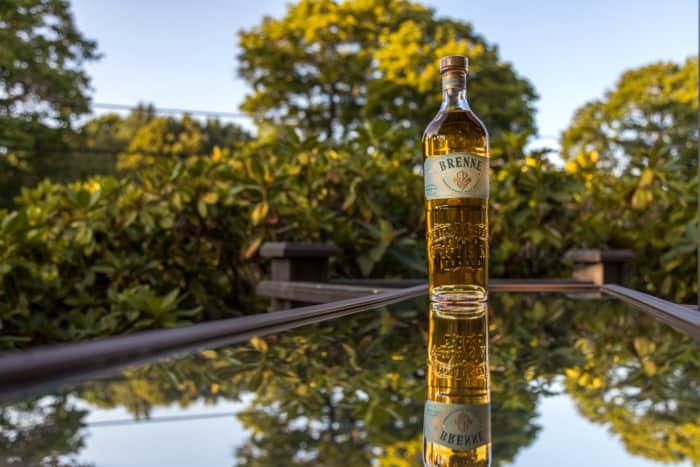
TWW: Talk a little bit about what you feel like makes your particular single malt unique?
Parc: Everything, literally everything. So as I said, I didn’t want a single malt that was using the same ingredients that everyone else is using. So working backwards starting with the barrel, because that’s what one attributes 60 to 70% of the flavor of the whisky in a bottle. We were the first single malt in the world using new French Limousin oak and XO Cognac barrels.
No port, no sherry, no bourbon. And again, when you think about 60 to 70% of the flavor of a single malt coming from the barrels in which it is aged, just by changing the barrels, you’re automatically going to release to the world something that’s a different taste, and it defies expectations. And so we’re using these two barrels.
Right before that, instead of using a pot still, we’re distilling in an alembic Charente still, which is a typical still used for making Cognac, which is a grape-based distillate, not a grain-based distillate. We’re doing the alembic Charente still for our yeast. We’re using a Cognac yeast so not one of the four main strains that are created in a lab where it’s an organic yeast. We crack our fermenters open a little bit, so we get some natural airborne yeast as well.
And then, also going to the water source, we’re using a local water from the Charente River.Also, out the back door of the distillery, we actually grow all of our own barley ourselves. It really is seed-to-spirit or farm-to-table, if you will. We grow two heirloom varietals of barley organically certified by EU standards on site.
TWW: You are doing a lot of things which are driven by local consideration, in terms of the ingredients you’re using, and hat kind of gets that sense of terroir. Talk a little bit about what terroir means to you from a whisky perspective. It’s pretty well known by folks about wine, but for whisky, it’s a little more of a newer concept.
Parc: We are doing everything local, both in the ingredients and also in the production method, like I said, so we’re not using like a copper pot still that’s traditional for making whisky, Terroir for me is very simple. It’s exactly as it is in wine. It’s having a sense of place in the smell and taste of a product. It’s why a sommelier in Japan or in Washington state can open up a bottle of wine and tell you by smell and taste what mountain region in France it’s from.
Ideally, I would love to see, 30 years from now, if people really embraced using 100% local ingredients in the making of their whiskwy, wouldn’t that be super cool? If we could have whiskey sommeliers, by smell and taste, tell you not just what style of whiskey they think it is, but where in the world they think it was made.
TWW: So you have this French whisky aged in French oak, and you have it for primarily U.S. market. French whisky in the U.S. market is still a relatively unknown entity. What challenges did you go through trying to sell people on the idea of putting it on back bars and in retail outlets?
Parc: Oh, it was pretty simple, actually. I just opened up a bottle and said, “Here, smell this.” Or poured a glass and said, “Here, taste this.” Because this intentionally doesn’t taste like any single malt out there, and it’s not just different for the sake of being different, but the taste is so unbelievably smooth and approachable and friendly and unique. It’s like in a blind taste test, I will always be able to find the brand.
It’s fruit forward, floral, creamy. And for anyone who is excited to try something new or maybe is looking for a gateway into single malts or just wants something that excites your pallet and is different from anything you might have at home, Brenne is a very easy fit right there.
Retailers got it, because it’s a great gift, and it’s a really fun experience and great for new newbies and collectors alike. And restaurants, especially like the high-end French bistros and mixology-driven places, they have so much fun with it. It’s so different and delicious in classic cocktails like a Manhattan, Old-Fashioned, Sidecar, things like that.
TWW: You spoke earlier to the impact of the barrel as being one of the key factors of a particular product. Talk about the flavor profile of your whiskies influenced by these types of barrels.
Parc: Limousin is very famous for giving this creme brûlée note. And I thought that was very fun, because if you think about bourbon and American Oak, there’s a very strong vanilla component, but that vanilla comes more in the experience of a charred burnt marshmallow. W
What I love about this French Oak is the vanilla that you get is like that beautiful creme brulee. It’s like that burnt top of the creme brûlée, the crispy part that everyone wants. So that was really compelling. And I thought in people’s experience, it’s not that far of a flavor note jump from the vanilla someone might experience in a really good bourbon.
What I love about these Cognac barrels is it punches up the fruit notes. So if you taste our distillate right off the still, we get a lot of ester molecules coming off these stills and tons of fruit notes in our distillate. Which, when the whisky just sat in the new French oak, those got quieted down and it was a lot more of this creme brûlée vanilla takeover, right?
By balancing that out with the Cognac barrels, I was able to bring back a lot of those fruit notes. They changed a bit, obviously, with age and barrels and all those other influences. Instead of like fresh green apple or fresh green banana or apricots and things like that off of the still, what we get now with these Cognac barrels is like Bananas Foster, blueberry muffin tops.
You still get a little apricot, but you get these almost cooked, still very fresh fruit notes. It’s really cool to experience how those barrels can pull up the attributes of the distillate.
TWW: The way you guys are presenting your whisky, you’re seemingly presenting it as a sipper and also something that would be good in cocktails. What do you feel about brand that makes it a good cocktail whisky and what kind of cocktails are best for it, just in general?
Parc: So I say, if you can imagine like an X and Y axis, right? On your X axis, it’s the flavor spectrum. So all the way over on the left is going to be your smoky, peaty, iodine, bandaid notes. And all the way over on the right on that flavor spectrum is your fruit notes, your really intense fruit notes. On the Y axis, the vertical axis, you have levels of intensity. So if you’re just focusing on whisky, if you say something like the Laphroaig or Ardbeg, you’re going to go all the way over to the left and all the way up to the top of the intensity
And that intensity, I think, of flavor is really fun, when you can find a cocktail, for example, where you would use a peated whiskey in a cocktail would be a penicillin sprayed on top or something like that.
Brenne, while on the absolute opposite side of that horizontal axis, it’s ll the way over on the right, at the very top on intensity. It has a lot of flavor. It’s just opposite side of the flavor spectrum. When you put Brenne into a cocktail, if you play with citrus notes, vermouth, things like that, it’s so fun.
TWW: When you think about the products in your portfolio, can you talk a little bit about each of the whiskies that you have?
Parc: For Brenne, it’s very simple. It’s only two. It’s Brenne Estate Cask, which when people say Brenne, that’s usually the whisky that they’re referring to. And then we also have Brenne Ten, with is 10-year-old whisky. [For this one] our barrels have the whisky for a minimum of 10 years, and I will pick four barrels every year that then will go into that year’s vintage. Only about 300 cases are made a year.
TWW: You’ve been doing this now eight-ish years or close to that. How do you feel the brand has done for you both personally and professionally?
Parc: I’ve been selling it for eight years, but I have been working on this since 2004. I love it. This company completely changed my life, and I have been able to connect with such an incredible community and travel a bit differently than the way I was traveling for my jobs beforehand.
I like the building process of the company, so I don’t have a problem sitting at my computer and working for 12 hours in a row. I find I actually am very motivated that way too.






